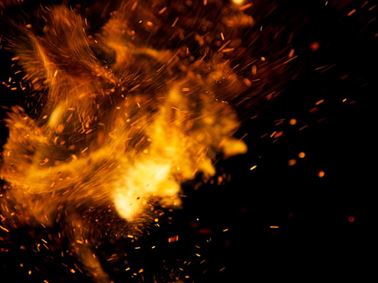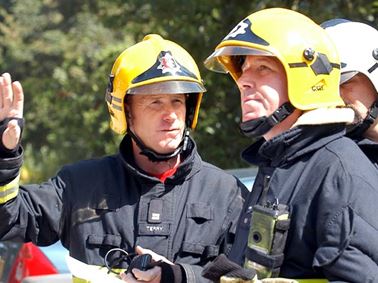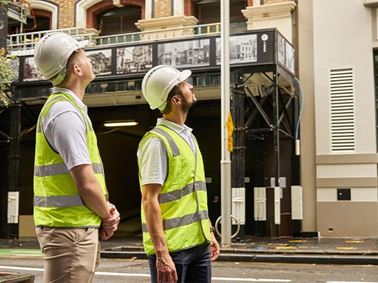Warringtonfire Australia has a team of accredited fire safety engineers who can conduct combustible cladding risk assessments for a range of projects.
What will a cladding risk assessment involve?
A qualitative risk assessment of the combustible cladding installed on the external walls of a building will typically include the following:
- Identifying cladding types and locations and substrate. If the cladding materials cannot be readily confirmed through visual inspection, spectroscopy lab analysis will be needed to identify the materials beyond reasonable doubt. Depending on the findings of our visual inspection, additional input from a facade engineer may be required.
- Identifying fire hazards associated with the building and combustible cladding considering use, size, occupant characteristics, evacuation provisions, and fire safety measures.
- Reviewing and commenting on the compliance of the combustible cladding with the National Construction Code Volume One – Building Code of Australia (NCC) 2019 Amendment 1 based on available evidence.
- Analysing the fire and life safety risk associated with the combustible cladding elements identified considering fire spread, evacuation, and fire brigade intervention.
- Ranking the fire and life safety risk associated with the combustible cladding as low, moderate, high, or very high. These risk rankings will be clearly defined for evaluation and action by stakeholders.
- Evaluating the overall risk of each combustible cladding element based on the established risk criteria and identification which hazards require treatment and the priority for treatment implementation.
If the fire safety engineering assessment finds that the combustible cladding represents a moderate or higher risk to life safety, a separate risk mitigation strategy may need to be developed in consultation with the relevant stakeholders, which includes:
- Identifying mitigation measures to reduce the risk associated with combustible cladding.
- Evaluating the effectiveness of the risk mitigation measures and residual risk to life safety presented by the combustible cladding.
- Documenting the risk treatment strategy including time frames and interim mitigation measures.
Why Warringtonfire Australia for your cladding risk assessment?
Warringtonfire Australia are also uniquely placed to draw upon the expertise of our testing laboratory in Melbourne, which has been at the forefront of full scale facade testing in Australia. This includes the ability to test to AS 5113 – the new NCC reference standard for combustible facades.
Analysis and Assessment Services

Fire Assessments
Warringtonfire provide two different types of fire assessment services; technical fire assessments of a product or system and fire safety engineering risk assessments for fire safety and cladding.

CFD Fire Modelling
Solve equations regarding fluid flow and heat transfer from the growth and spread of fire.

Fire Safety Strategy
A fire strategy is the way in which fire safety objectives for a new, altered or existing building are defined and achieved. Warringtonfire’s experienced team of fire safety engineers and consultants in Australia will create the best strategy for your project.

Performance Solutions
At Warringtonfire, we use a performance-based approach to customise a package of alternative fire safety measures for a design – allowing our clients to achieve their objectives but still maintain the level of fire safety required by the building code and approval authorities.

Fire Evacuation Modelling
Latest technology for fire evacuation modelling in order to create an economical and robust solution.

Radiant Heat Transfer Modelling
Radiant heat transfer modelling is a key tool that the fire safety engineers at Warringtonfire use when trying to predict the expected radiant heat transfer from fires to the surroundings and between buildings.

Fire Brigade Intervention Modelling
We can quantify firefighting activities in our fire engineering assessments by using the fire brigade intervention model (FBIM). The FBIM predicts the time taken by a fire brigade to undertake its activities at the fire scene from time of notification through to control and extinguishment.

Fire Risk Assessment
Key fire safety disciplines enables us to provide the most comprehensive and insightful fire risk assessment.

Cladding Risk Assessment
Warringtonfire Australia has a team of accredited fire safety engineers who can conduct combustible cladding risk assessments for a range of projects.
